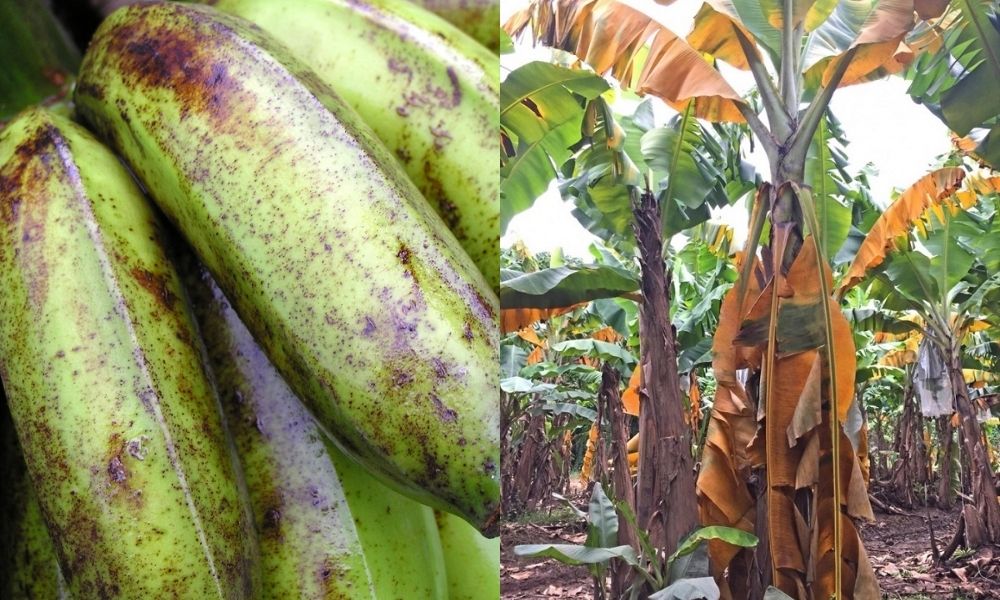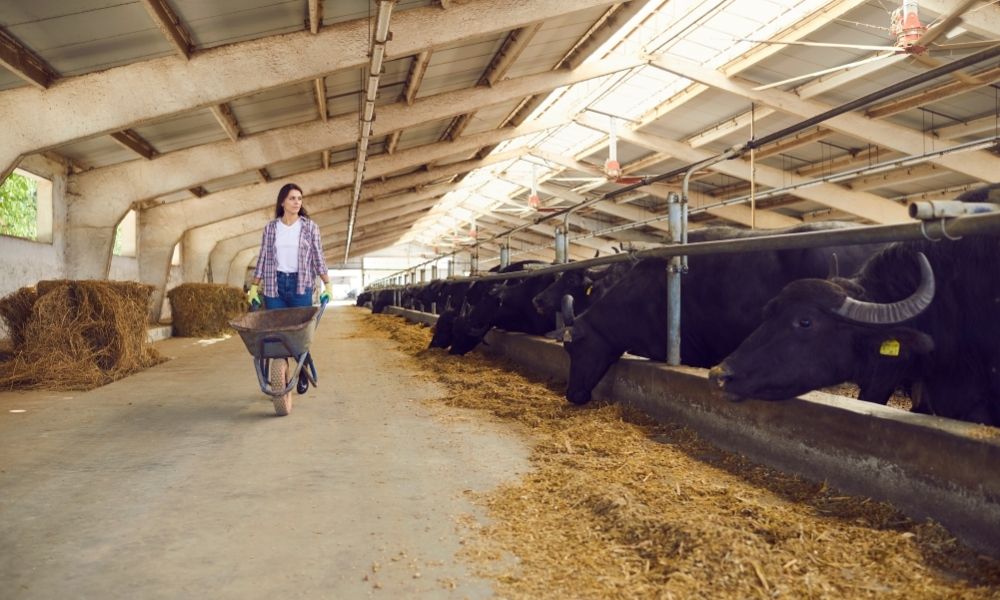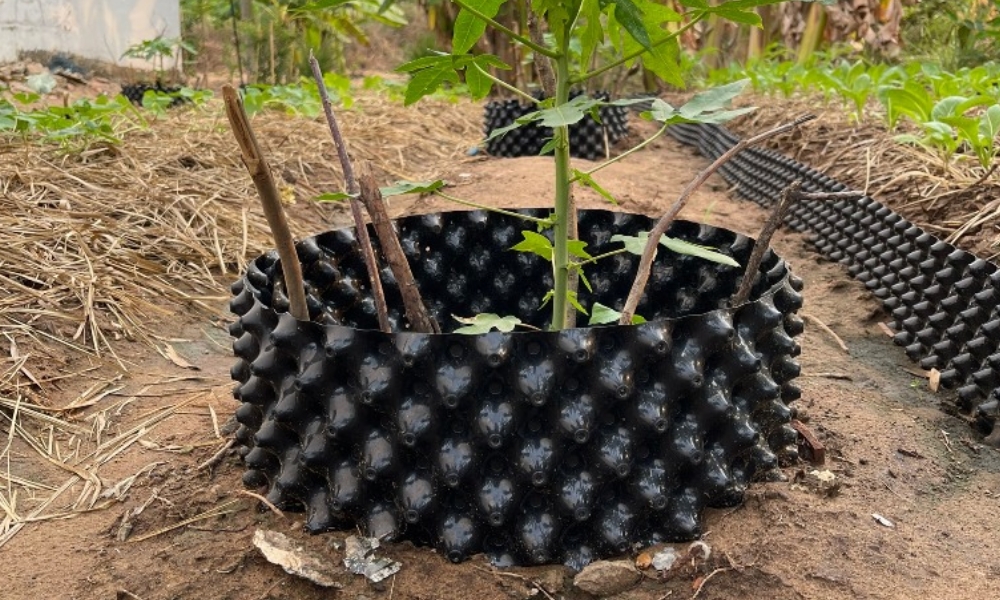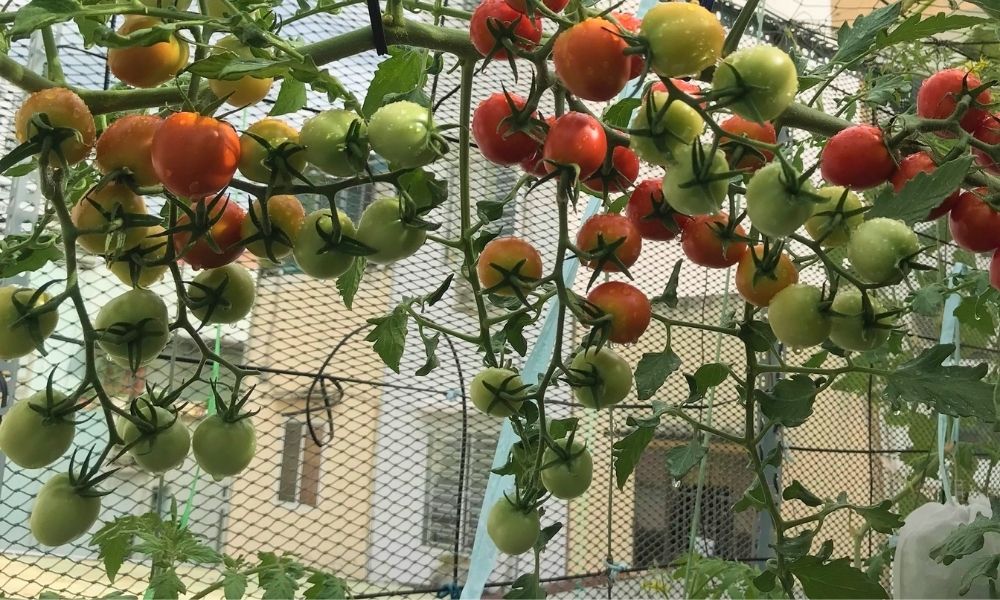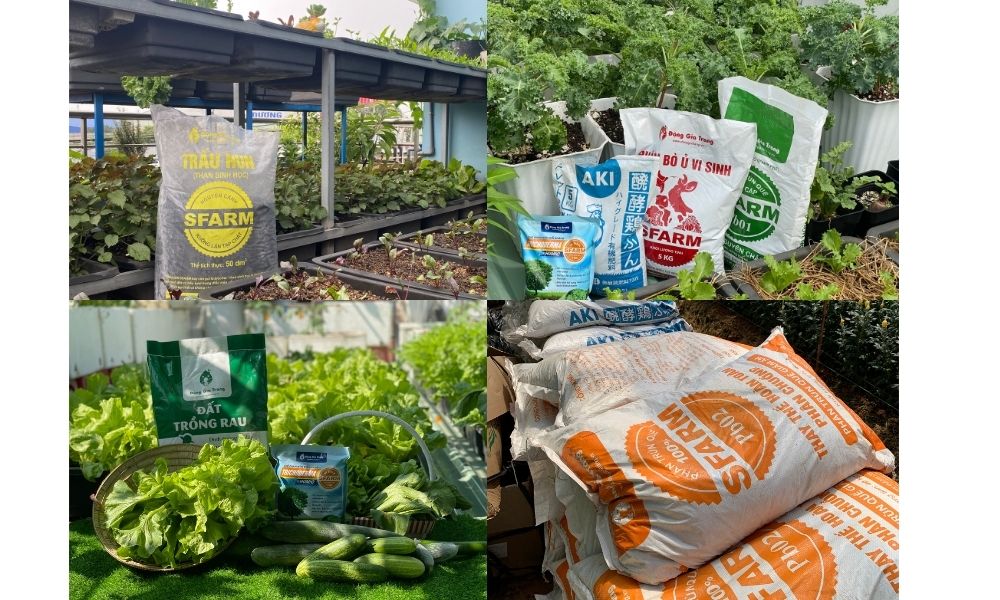Dưa Lưới Tiếng Trung Là Gì? Tên Tiếng Trung, Loại, Giá & Lợi Ích Sức Khỏe
What is melon in Chinese? Are you learning about this sweet, fragrant fruit? From Chinese, cantaloupe is called 甜瓜 (tián guā), a name that immediately evokes its sweet taste. In fact, there are many types of cantaloupe, from the famous Hami melon (hā mien guā) to Japanese and Korean melon varieties.
This article by KTH GARDEN will provide you with complete information about cantaloupe: from the Chinese name, popular types of cantaloupe, price, season, nutritional value, to how to choose delicious cantaloupe. and the health benefits it brings. Let’s explore the wonderful world of cantaloupe now!
What is melon in Chinese? Characteristics and popular types of cantaloupes
Cantaloupe, also known as 甜瓜 (tián guā) in Chinese, is a fruit of the gourd family, known for its sweet, cool taste and characteristic aroma. Cantaloupe rind is usually light yellow or green, the surface has special mesh lines, giving it its name. The melon pulp is ivory white or light yellow, with a crisp, succulent texture. The variety of melon varieties gives us many options with different colors, flavors, and textures. For example, the red-fleshed cantaloupe (红心甜瓜 – hóngxīn tián guā) stands out with its vibrant color inside, while the Hami melon (哈密瓜 – hāmàmí guā) possesses a rich sweet flavor and a particularly attractive aroma. drooping.
Cantaloupes not only vary in color and taste but also differ in size and shape. There are melons that are small and can fit in the palm of your hand, and there are large, round melons that weigh several kilograms. The shape is also diverse, from round, oval to oblong. This diversity depends on the melon variety as well as climatic conditions and growing techniques. For example, Japanese cantaloupe (日本甜瓜 – rìběn tián guā) is often known for its compact size, thin skin and high sweetness, while Korean cantaloupe (韩国甜瓜 – vinhuó tián guā) may have Larger size and distinct flavor.
An interesting point that few people know is that the melon rind also contributes to creating a unique flavor. Cantaloupe rind, although often discarded, contains a significant amount of antioxidants and health-beneficial nutrients. So, if you are looking for a detox or skin-beautifying recipe, try using the whole cantaloupe peel to make a natural mask or juice. However, it is necessary to wash the melon peel thoroughly before using. Some people also like to use cantaloupe peels to soak in sugar, creating a unique cantaloupe peel jam.
Speaking of popular types of cantaloupes, besides Hami melons and types of cantaloupes based on country of origin, there are also hybrid types of cantaloupes with their own outstanding characteristics. Some melon varieties are more resistant to pests and diseases, while others have higher yields. Improvements in melon varieties are constantly being researched and developed, giving consumers more choices in quality and flavor. For example, some new varieties of cantaloupes have shorter harvest times, helping farmers save time and money.
Current price of cantaloupe and how to choose to buy delicious, quality cantaloupe
The current price of cantaloupe is quite volatile, depending on many factors such as season, origin, quality and time of year. Normally, melon prices will be higher in the summer months, when demand is high and supply is limited. Conversely, in the fall or winter, cantaloupe prices may decrease due to increased cantaloupe production. However, this is only a general trend, the specific price of cantaloupe in each region may be different. To update the most accurate price of melon, you should refer to prices at fruit stores, supermarkets or markets near where you live.
Choosing to buy delicious, quality cantaloupe requires a little experience. The most important thing is to observe the appearance of the melon. A delicious cantaloupe usually has plump skin, bright color, and is not waterlogged or bruised. Don’t forget to check the firmness of the melon by gently holding it and feeling its weight. A delicious cantaloupe usually has a relatively heavy weight compared to its size.
Alternatively, you can use your hand to gently press the surface of the melon. A ripe cantaloupe usually has good elasticity, neither too soft nor too hard. If the melon is too soft, it may be overripe and no longer delicious. On the contrary, if the melon is too hard, it may not be ripe yet. You should also pay attention to the aroma of the melon. A delicious cantaloupe usually has a light, characteristic aroma.
Not only observing the outside, you should also consider the origin of the melon. Cantaloupe imported from countries with advanced growing technology often has higher quality, but the price will also be higher than domestically grown cantaloupe. Please learn about the origin of cantaloupes before buying to ensure food safety and hygiene. Finally, buy melons at reputable locations with clear origins to avoid buying poor quality products.
Health benefits and nutritional value of cantaloupe
Cantaloupe is not only a delicious fruit but also brings many great health benefits thanks to its rich nutritional value. Cantaloupe is a rich source of vitamin C, which helps strengthen the immune system and protect the body from pathogens. A medium-sized cantaloupe can provide more than 50% of the body’s daily requirement of vitamin C. In addition to vitamin C, cantaloupe also contains many other vitamins and minerals such as vitamin A, vitamin K, potassium, magnesium…
The antioxidant content in cantaloupe is also very significant, helping to protect cells from damage caused by free radicals. Free radicals are responsible for many chronic diseases, including cancer, cardiovascular disease and premature aging. Antioxidants in cantaloupe help neutralize free radicals, reducing the risk of these diseases. Some studies also show that compounds in cantaloupe can help reduce blood pressure, improve heart health and support digestion.
Furthermore, cantaloupe is low in calories, very suitable for people who want to lose weight or maintain their ideal weight. With only about 34 calories in 100g of cantaloupe, it is the perfect choice for a healthy and nutritious snack. With abundant water, cantaloupe also helps replenish water for the body, especially useful on hot summer days. Cantaloupe juice is also a great cooling drink.
However, it should be noted that cantaloupe has a fairly high natural sugar content. Therefore, people with diabetes should eat cantaloupe in moderation and consult a doctor or nutritionist to have a suitable meal plan. It is best to eat fresh cantaloupe instead of products made from cantaloupe with added sugar to control sugar intake. In addition, pregnant women should consult their doctor before adding cantaloupe to their diet.
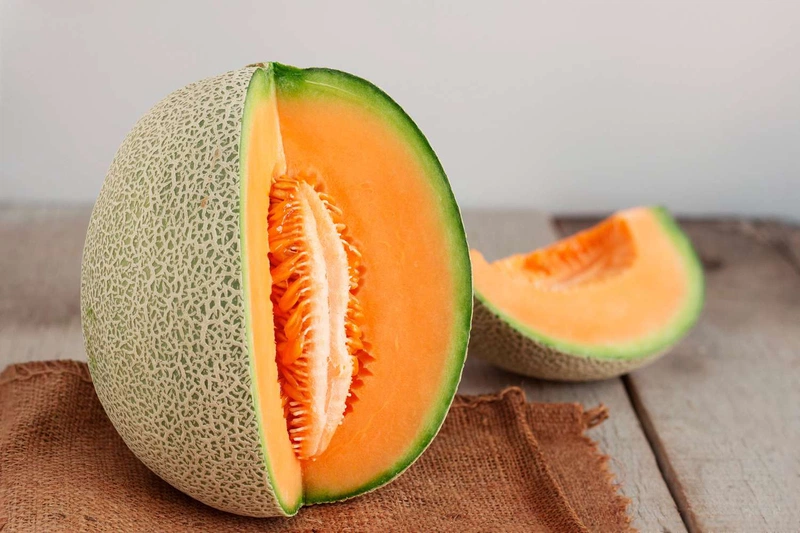
How to grow cantaloupe effectively: instructions from preparation to harvest
Growing cantaloupe successfully requires meticulousness and a deep understanding of this crop. With 20 years of experience in the industry, I would like to share valuable experiences to help you harvest sweet, high-quality cantaloupes.
First, choosing a variety is an extremely important step. Currently, there are many varieties of melon being bred, each variety has its own characteristics in terms of yield, fruit quality, disease resistance… You should choose a variety suitable for the climate and soil conditions of the growing area. For example, Japanese cantaloupe varieties often produce delicious, sweet fruits but require more technical care than other cantaloupe varieties. Consult reputable seed suppliers or agricultural experts to choose the most suitable variety. Some popular varieties of cantaloupe today include red-fleshed cantaloupe (红心甜瓜), Korean cantaloupe (韩国甜瓜), and Hami melon (哈密瓜), each with its own characteristics of harvest time and flavor. different.
Next, preparing the soil for planting is something that cannot be overlooked. Cantaloupes need loose, nutrient-rich, well-drained soil. Before planting, you should plow the soil thoroughly, clean weeds and fertilize with decomposed organic fertilizer. Depending on soil quality, you can add other fertilizers such as NPK fertilizer to ensure adequate nutrients for plant growth. Soil analysis before planting will help you determine the exact type and amount of fertilizer needed. Some farmers also use the method of making raised beds to help with better drainage, especially during the rainy season.
The planting stage also requires care. You can sow seeds directly into the ground or sow them into nursery pots and then transplant the seedlings. Direct seeding is often more cost-effective but germination rates may be lower. If you choose the nursery method, you need to make sure the soil is moist enough and keep a stable temperature so the seedlings can grow healthily before transplanting. The distance between trees when planting should be calculated properly to ensure that the trees have enough area to grow, avoiding stunted growth and low productivity. Normally, the distance between plants is about 50-70cm, and the distance between rows is 1-1.2m depending on the melon variety.
Taking care of melons throughout the growing process is extremely important. Adequate and proper watering is the key factor. Cantaloupes need the most water during the flowering and fruiting stages, but you need to avoid over-watering, which can cause root rot. Be sure to water the roots and avoid watering the leaves. Besides, top dressing is also very important. You need to apply balanced fertilizer at the right time for the plant to grow strongly. During the growing process, you need to regularly check the tree to detect and promptly treat harmful pests. Use of pesticides must comply with instructions and be safe for people and the environment.
Cantaloupe season and origin of different types of cantaloupe (Japan, Korea…)
Cantaloupe is a crop with a fairly long growing season, depending on the variety and climatic conditions. In Vietnam, the main crop of cantaloupe usually falls in the summer, from March to September. However, with modern greenhouse technology, growing cantaloupe all year round is completely feasible.
The origin of cantaloupes is also very diverse. Cantaloupes are believed to have originated in China, then spread to many other areas of the world. Japan and Korea are two countries famous for high-quality melon varieties. Japanese melons often have a characteristic flavor, sweet and delicious, grown mainly in the Hokkaido region, northern Japan. The characteristic of Japanese melon is its sweet taste and high crunchiness, the fruit size is usually small and round. Korean cantaloupe, especially cantaloupe from the Gimcheon region, is also famous for its excellent quality, usually dark green skin, light yellow flesh, rich sweetness, and very fragrant.
In addition, there are many different varieties of melon grown in many countries around the world, each variety has its own unique characteristics in shape, color, flavor and harvest time. For example, Hami melon (哈密瓜) is famous for its rich sweetness and distinctive aroma, originating from the Hami region, Xinjiang, China. Learning carefully about different cantaloupe varieties will help you choose the variety that suits your conditions and achieve high yields. Choosing a melon variety suitable for local climatic conditions is extremely important to ensure productivity and quality.
Delicious dishes and ways to preserve cantaloupe for a long time
Cantaloupe is not only a delicious fruit but also very diverse in preparation. From simple dishes like eating them raw, making smoothies, to more elaborate dishes like salad, cantaloupe ice cream, or making cantaloupe jam… all bring great flavors. Cantaloupe combined with other fruits also creates attractive smoothies, full of vitamins and minerals. The sweet, cool taste of cantaloupe will satisfy many people’s palates, especially on hot summer days. For those who love baking, melon is also an ideal ingredient to create delicious and attractive cakes. The variety in processing cantaloupe allows you to freely create new, nutritious dishes for your family.
Properly storing cantaloupes helps keep the fruit’s freshness longer. You should choose fresh cantaloupe with plump, undamaged skin. After purchasing, you should not wash the melon immediately but should keep it in a cool place, away from direct sunlight. If you want to preserve it longer, you can put the melon in the refrigerator, but you should only keep it for a short time, no more than 3-5 days. Before putting it in the refrigerator, you should cover the cantaloupe with plastic wrap or a plastic bag to avoid dehydration. You absolutely should not put melon in the freezer because it will damage the structure of the fruit. Proper storage will help you enjoy the fresh taste of cantaloupe for a longer period of time.
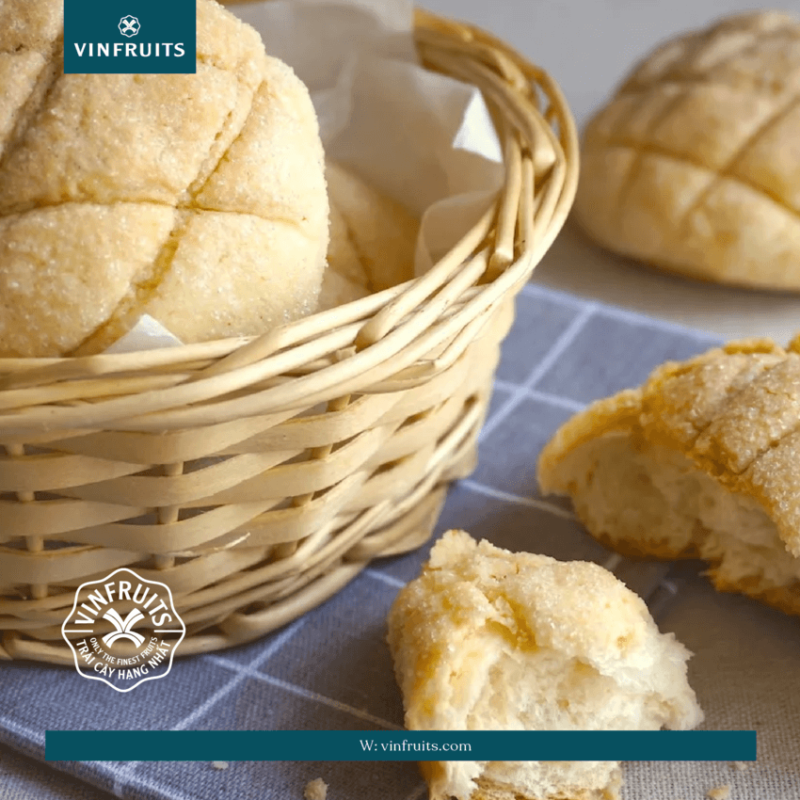

 0934.19.6789
0934.19.6789

